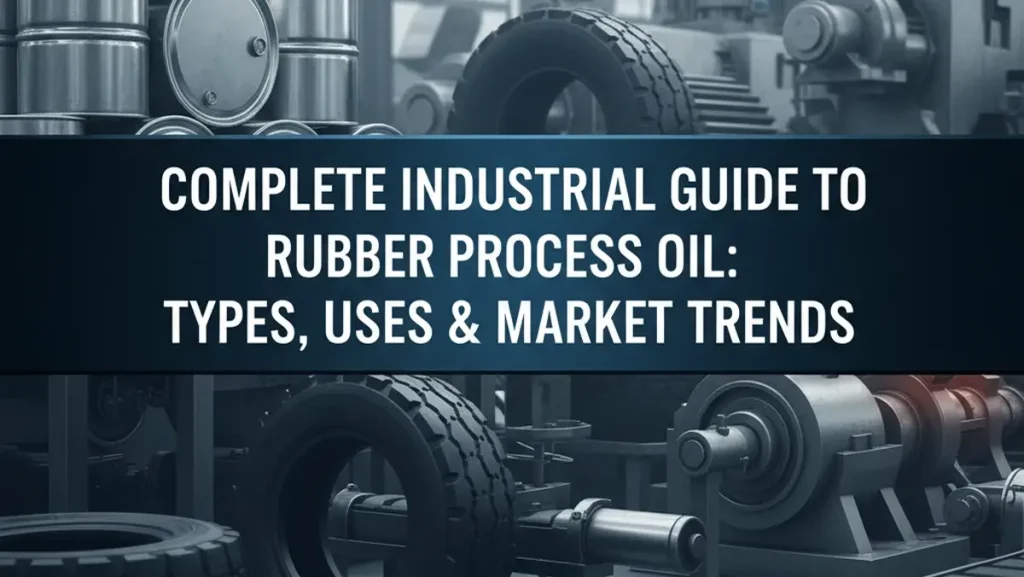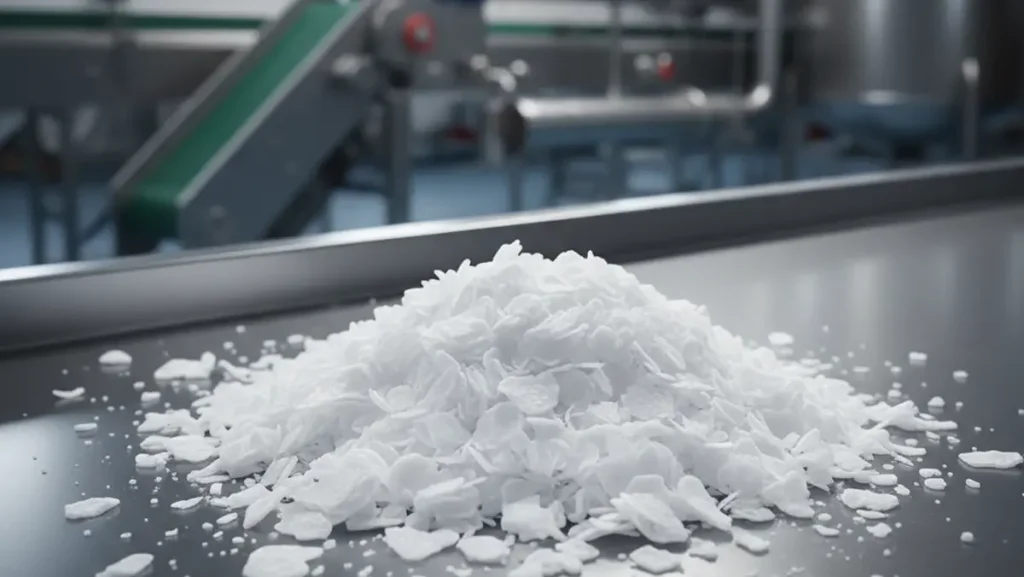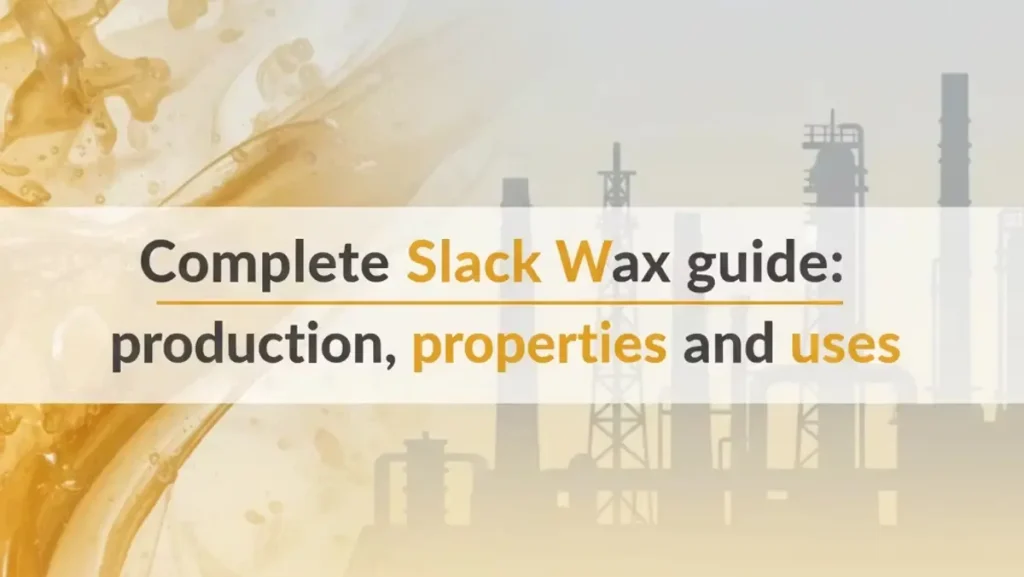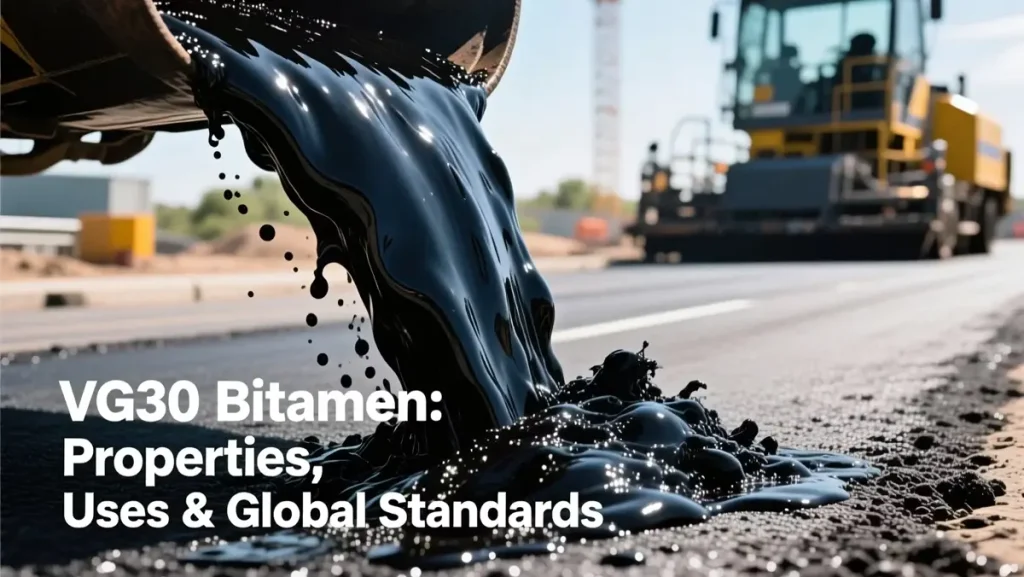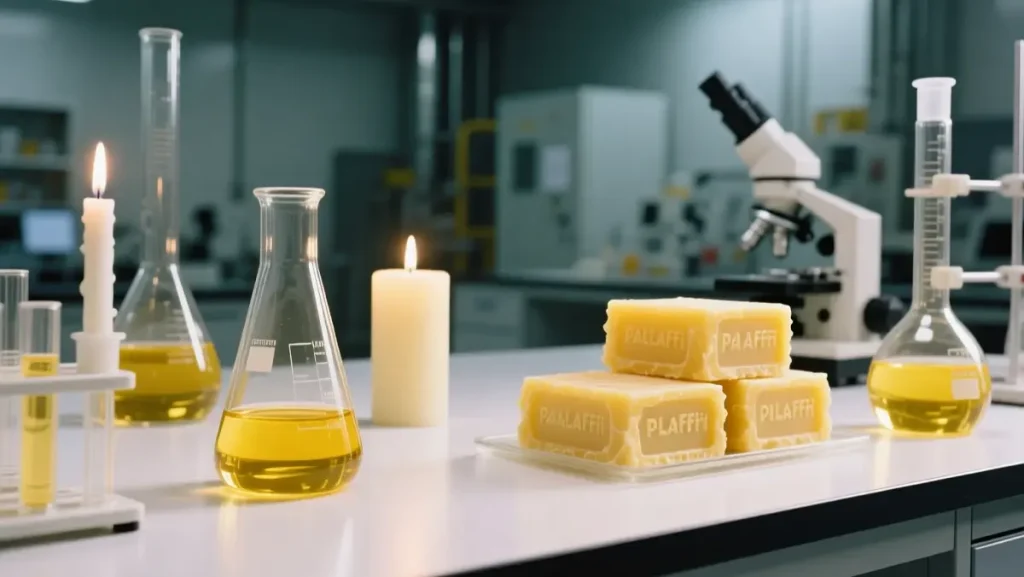Rubber Process Oil (RPO) is a specialized hydrocarbon oil essential in modern rubber compounding and manufacturing. It improves the flexibility, processability, and cost-efficiency of rubber products such as tires, hoses, mats, and footwear. By acting as a softener and extender, RPO ensures that rubber compounds mix evenly and maintain long-term performance.
Globally, RPO has become a cornerstone of industrial production, balancing technical quality with environmental responsibility. Manufacturers rely on different grades—paraffinic, naphthenic, and aromatic oils—each engineered for unique processing and durability needs. In recent years, sustainable and low‑PAH (polycyclic aromatic hydrocarbons) alternatives such as TDAE, RAE, MES, and bio‑based oils have gained momentum to meet international standards like EU REACH and US EPA regulations.
The importance of Rubber Process Oil lies not only in improving rubber performance but also in meeting rising global demands for eco‑friendly solutions. As the automotive and polymer industries expand, RPO production and trade continue to play a decisive role in industrial growth and environmental progress.
Definition of Rubber Process Oil (RPO)
Rubber Process Oil (RPO) is a petroleum‑derived plasticizer and extender used in rubber manufacturing. Its main purpose is to make rubber compounds easier to mix and shape while improving flexibility and softness. By adding RPO, producers can reduce production costs and achieve better consistency in finished rubber products.
RPO acts as both a lubricant and softening agent during the mixing stage. It helps raw rubber absorb fillers and additives evenly, preventing cracks and surface defects. The right type of RPO ensures stable elasticity and smooth processing under different temperature ranges.
Chemically, Rubber Process Oil is classified into three major groups based on its hydrocarbon structure:
- Paraffinic RPO – known for light color and high oxidation stability.
- Naphthenic RPO – recognized for balanced solubility and moderate viscosity.
- Aromatic RPO – rich in aromatic hydrocarbons that provide strong compatibility with synthetic rubbers.
Each type serves specific industrial needs, from tyre production to footwear, hoses, conveyor belts, and seals. Overall, RPO is considered an indispensable component of modern rubber formulation, combining technical efficiency with environmental and economic advantages.
Chemical Composition of Rubber Process Oil (RPO)
The chemical structure of Rubber Process Oil (RPO) defines its performance in industrial applications. RPOs are mixtures of hydrocarbon molecules that come from refined petroleum. Their composition determines properties such as viscosity, color, solubility, and environmental impact.
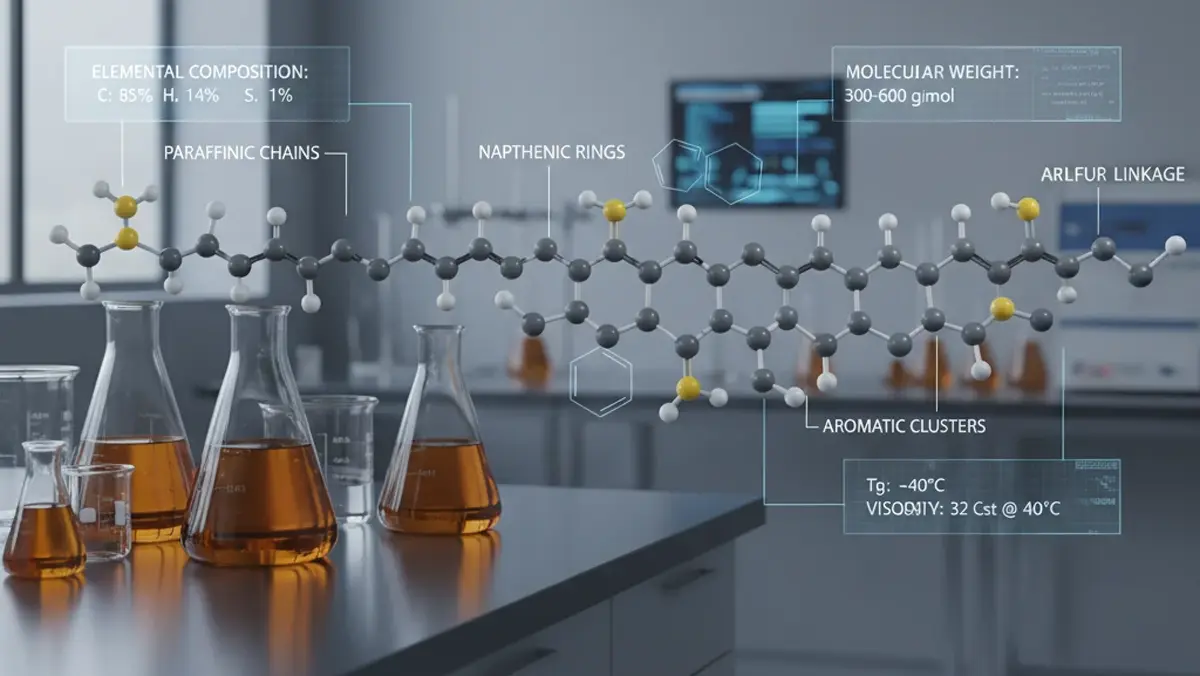
Paraffinic RPO
Paraffinic Rubber Process Oil contains mainly saturated hydrocarbons. These molecules provide excellent oxidation stability and high viscosity index. Because of their light color and low aromatic content, paraffinic oils are favored in light‑colored rubber goods such as seals and mats. Their low level of polycyclic aromatic hydrocarbons (PAHs) meets modern environmental safety standards.
Naphthenic RPO
Naphthenic RPO is rich in cycloparaffinic hydrocarbons. It offers medium viscosity and strong low‑temperature flexibility. This balanced composition makes it suitable for general rubber and industrial applications. Naphthenic oils blend easily with natural and synthetic rubbers, providing smooth processing performance. Global market share of this type reached nearly 48 percent in 2024.
Aromatic RPO
Aromatic Rubber Process Oil has the highest concentration of aromatic hydrocarbons, giving it strong solvency and excellent compatibility with rubber polymers. It is commonly used in tyre manufacturing due to its ability to enhance grip and elasticity. However, its higher PAH content faces stricter global regulations, limiting its use mostly to Asia‑Pacific producers where cost efficiency remains essential.
Eco‑Friendly Variants (TDAE, RAE, MES, Bio‑Based Oils)
To comply with environmental demands, industries are adopting eco‑friendly Rubber Process Oils:
- TDAE (Treated Distillate Aromatic Extract): low‑PAH and fully approved under EU REACH rules.
- RAE and MES: cleaner aromatic extracts replacing traditional high‑PAH oils.
- Bio‑Based Oils: renewable plant‑derived versions that support sustainability goals and reduce carbon footprint.
These advanced formulations allow manufacturers to keep high performance while meeting international green standards.
Manufacturing Process of Rubber Process Oil (RPO)
The production of Rubber Process Oil (RPO) begins as part of the petroleum refining process. RPO is obtained as a by‑product of crude oil distillation or during base oil manufacturing. Its production method defines the purity, aromatic level, and environmental compliance of the final product.

Step 1 – Crude Oil Fractionation
Raw crude oil is heated and separated into various fractions under controlled temperature and pressure. The heavier fractions are processed further to extract lubricating base oils and specific hydrocarbon cuts used to make Rubber Process Oil.
Step 2 – Solvent Extraction
In this step, solvents are used to remove excess aromatic compounds. This extraction helps control PAH (polycyclic aromatic hydrocarbons) levels. The goal is to improve color, odor, and oxidation stability. Solvent extraction is the main technique for producing low‑PAH paraffinic and naphthenic RPOs.
Step 3 – Hydroprocessing
To achieve high‑purity grades, refiners apply hydrogen treatment or hydrofinishing. Hydrogen reacts with oil molecules to remove sulfur, nitrogen, and aromatics. This process results in safer oils that comply with regulations like EU REACH and US EPA.
Step 4 – Separation and Refining
After extraction and hydroprocessing, the product undergoes separation, filtration, and stabilization. Each RPO fraction (Aromatic, Naphthenic, Paraffinic) is refined based on desired viscosity and solvency levels. Testing ensures consistent performance for rubber compounding.
Step 5 – Quality Control
Modern RPO production includes laboratory testing for viscosity, flash point, density, and PAH content. Manufacturers must confirm compliance with international standards before packaging and distribution.
In recent years, the industry trend has shifted toward hydrogenated and solvent‑treated production. These methods minimize environmental risk while maintaining strong performance characteristics. Producers in Asia‑Pacific lead global output, increasingly focusing on eco‑friendly Rubber Process Oils designed for sustainable growth.
Industrial Applications of Rubber Process Oil (RPO)
Rubber Process Oil (RPO) plays a central role in multiple industrial sectors. It improves workability, flexibility, and product life while reducing manufacturing costs. Because of its versatile composition, RPO is used in both natural and synthetic rubber processing.

Tyre Manufacturing
Tyre production is the largest consumer of Rubber Process Oil, accounting for around 78 percent of total global usage. RPO helps mix rubber compounds evenly, increases elasticity, and enhances grip and wear resistance. Eco‑friendly RPOs, such as TDAE, RAE, and MES, are now standard choices for modern tyre formulations, ensuring compliance with EU REACH and other clean‑air regulations.
Footwear Industry
In shoe soles and protective rubber footwear, RPO gives better softness and flexibility. It prevents cracking during molding and provides consistent shine and durability.
Hoses and Conveyor Belts
Industrial hoses, transmission belts, and conveyor systems rely on RPO to maintain elasticity under pressure and temperature variations. The oil acts as an internal lubricant, reducing friction and energy loss in heavy machinery.
Seals and Mats
Paraffinic RPOs are especially preferred for seals, gaskets, and mats that need light color and high ozone resistance. These applications require strong oxidation stability and low‑PAH performance.
Automotive and Polymer Industries
Automotive components and polymer processing also depend on Rubber Process Oil as an extender. RPO improves blending with fillers and polymers while keeping cost efficiency high. Manufacturers use it to achieve precise viscosity levels and surface finish.
Growth of Sustainable Grades
With stricter global regulations and customer awareness, industries are rapidly switching to eco‑friendly Rubber Process Oils. These alternatives maintain the same technical advantages but reduce health risks and emissions. The change marks a shift toward sustainability in global industrial production.
Comparison with Other Process Oils
Rubber Process Oil (RPO) is often compared with other industrial oils used in rubber manufacturing. While these fluids may appear similar, their functions, composition, and regulatory status are very different.
1. RPO vs. Slack Wax
Slack Wax is a byproduct of petroleum refining and contains paraffin and oil residues. It acts more as a feedstock for wax production rather than a processing aid.
RPO Advantage: Fully refined and standardized composition.
Slack Wax Limitation: High oil content makes it unstable under heat or stress.
In short, Slack Wax cannot replace Rubber Process Oil because it lacks the desired consistency and solvency for rubber blending.
2. RPO vs. Base Oil
Base Oil is mainly designed for lubricants and engine oils, focusing on viscosity and oxidation stability.
RPO Advantage: Strong solvency and rubber compatibility.
Base Oil Limitation: Less interaction with polymers, often too pure to act as an extender.
Therefore, even though both come from crude processing, Base Oil serves mechanical systems while RPO serves material engineering and polymer processing.
3. Technical and Regulatory View
Rubber Process Oil meets strict environmental demands. Modern RPO, especially hydrotreated grades, holds very low PAH levels that comply with EU REACH and EPA norms.
Slack Wax and unrefined Base Oils do not meet these safety standards for tyres or consumer uses. This makes Rubber Process Oil the preferred option for sustainable and compliant production.
4. Practical Summary Table
| Property / Feature | Rubber Process Oil (RPO) | Slack Wax | Base Oil |
|---|---|---|---|
| Typical Use | Rubber compounding, tyres, hoses | Candle feedstock, blending | Lubricants, engine oils |
| Viscosity & Compatibility | Medium to high, polymer friendly | Low, poor polymer mixing | Medium, lubricant oriented |
| PAH Level | Very low (eco grade) | High | Moderate to low |
| Environmental Compliance | Fully REACH/EPA compliant | Limited | Industrial only |
| Substitutability for RPO | — | Not suitable | Partially possible (minor) |
Rubber Process Oil stands apart from other petroleum products thanks to its excellent balance between solvency, viscosity, and environmental performance. It remains the most practical and regulated choice for rubber manufacturing industries worldwide.
Technical and Regulatory Comparison Matrix
The following matrix shows how the main Rubber Process Oil (RPO) types differ in physical, chemical, and environmental performance. It highlights which grades fit current international regulations and industrial needs.
| RPO Type | Main Composition | Solvency Power | Viscosity Range | Typical PAH Level | Key Applications | Regulatory Compliance |
|---|---|---|---|---|---|---|
| Paraffinic RPO | Saturated hydrocarbons | Moderate | Medium to High | Low (< 0.5 mg/kg) | Light rubber goods, seals, mats | Fully REACH and EPA compliant |
| Naphthenic RPO | Cycloparaffinic chains | High | Medium | Low to Moderate (≤ 1 mg/kg) | Tyres, hoses, automotive parts | Compliance depends on hydroprocessing |
| Aromatic RPO | High content of aromatic rings | Very High | High | High (> 15 mg/kg) | Heavy duty rubber, industrial tyres | Restricted by EU REACH, EPA limits |
| TDAE (Eco Grade) | Treated Distillate Aromatic Extract | Excellent | Medium | Very Low (< 1 mg/kg) | Tyres, export rubber products | Fully approved under REACH |
| RAE / MES | Residual / Mild Extract Solvent | High | Medium | Very Low | Automotive rubber, sealing components | Global acceptance under REACH and EPA |
| Bio Based RPO | Vegetable or renewable feedstocks | Moderate | Medium | Ultra Low | Green products, eco tyres | Emerging standard ISO 14001 compliant |
Key Observations
- Paraffinic and Naphthenic grades dominate industrial usage due to low toxicity and wide application flexibility.
- Aromatic RPO is gradually disappearing in Western and export oriented industries.
- TDAE, RAE, and MES are now considered universal replacements for high PAH oils.
- Bio Based RPO shows promise for future sustainability but remains relatively expensive.
- Regulation pressure, especially from EU REACH and EPA, drives the continuous technological shift toward low PAH production.
Key Takeaways of Rubber Process Oil
Rubber Process Oil (RPO) is one of the most important materials in the rubber and tyre industry. It improves flexibility, mixing quality, and durability while lowering production cost. The market has moved strongly toward safer and cleaner grades such as TDAE, RAE, MES, and Bio Based RPOs, replacing old aromatic oils that contained high levels of PAHs. This transition has been driven by strict environmental policies from EU REACH and the U.S. EPA, which require very low aromatic and emission levels in industrial products.
By 2025, global demand for Rubber Process Oil will continue to rise, led by the Asia Pacific market, contributing nearly half of worldwide consumption. The overall market value has already reached more than USD 2.4 billion, supported by growth in tyre production and eco technology development. Manufacturers now rely on hydroprocessed and hydrogen treated forms of RPO to meet environmental, health, and quality standards.
Modern RPO types show strong oxidation resistance, stable viscosity, and excellent compatibility with both natural and synthetic rubber compounds. These improvements bring consistent performance and enhance product lifetime for tyres, seals, hoses, and mats. Going forward, bio based and renewable oils are expected to gain market share as industries and consumers focus on sustainability.
The evolution of Rubber Process Oil from a traditional extender to a low PAH, eco friendly ingredient represents a turning point in industrial chemistry. Companies investing in clean and sustainable RPO solutions now secure long term success and global competitiveness by combining production efficiency with environmental responsibility.
References (Summary of Research Sources)
This article is based on deep research from more than forty trusted international and industrial references. The main categories of sources include:
- Global RPO manufacturers’ data sheets and product catalogs (Ergon Oil, Nynas AB, ExxonMobil, IndianOil Corporation, Chevron Corporation, Shell Global, Repsol S.A, TotalEnergies).
- Technical documents from ASTM, ISO, and SAE standard organizations.
- Regulatory guidelines from EU REACH, EPA TSCA, and BIS India 15789.
- Market research reports (2024–2025) published by verified agencies focusing on rubber additives and eco friendly oil markets.
- Scientific and commercial literature covering the chemistry, refinement, and industrial applications of Rubber Process Oil.


